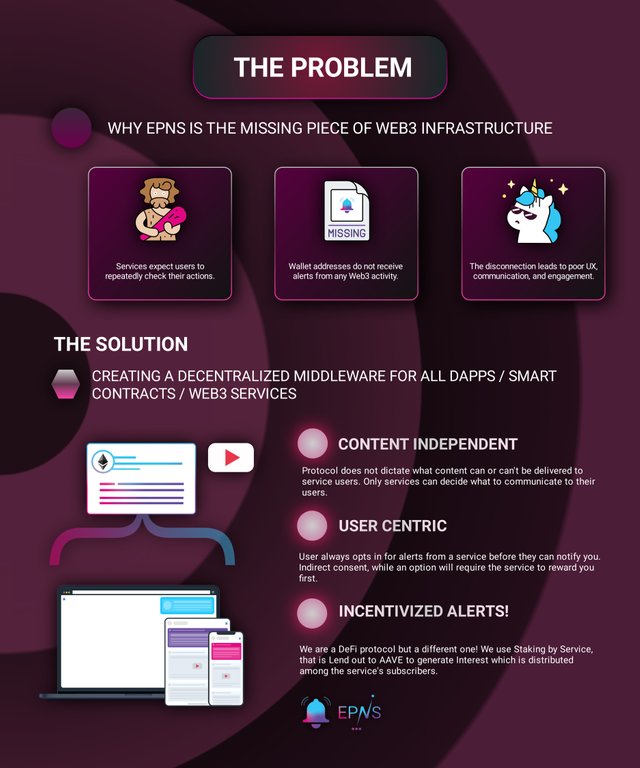Why EPNS is a Compelling Innovation to the Blockchain Space
Blockchain technology is without doubt one of the biggest innovations of the 21st century. Its complementary role to cryptocurrency helps it facilitate enhanced security, transparency and decentralization in financial transactions.
However, in spite of the widespread success for the blockchain, its communication protocol is not exactly flawless especially if assessed on the threshold of notification.
The capacity for decentralized communication is a necessary factor for the optimal performance of the blockchain. Notifications are quite important for blockchain especially when time sensitive information is involved. Fortunately, the Ethereum Push Notification Service (EPNS) does just that.
The EPNS is a blockchain protocol that facilitates decentralized communication between services and wallet addresses of users. Just as the name implies, it is a DeFi protocol built on the Ethereum protocol hence it services Ethereum based Web 3.0 applications.
This implies that dApps and service providers are liable to be prompted by a notification whenever the condition for a smart contract is fulfilled.

EPNS Operations
EPNS works by sending notifications which includes smart contracts and p2p nodes and this funnels all communication protocol from service to subscribers.
Smart Contract Enabled Notifications
It is built in such a way that smart contracts can also evoke notifs from source. The notifications can be sent in the form of JavaScript Object Notation (JSON) payloads. JSON enables data to be transferred from a decentralized environment. However, before an information can be sent out, a fee that can be payed through ETH or DAI. The sending and reception of Notifs through EPNS warrants that it is first processed through the middleware smart contract before it can be dispatched.
Dedicated Wallets Address
Channels have the option of selecting a dedicated wallet address to send notifications for them. The workings of EPNS is mainly to harmonize and bridge the gap between the user and the service such that the service is placed within reach of the user as opposed to the user seeking out the service.
Cross Chain Capability
It is apt to note that although it is built on the Ethereum platform, EPNS can also function on a cross chain basis. In other words, it can be effective on other chains as well. EPNS utilizes content type to assign payloads which in turn allows it to escape charges for services such as encrypted transactions or medias such as images, videos and call to action.
Conclusion
The features of EPNS make it quite a compelling addition to the blockchain industry. For instance, it incentivizes notification for users. This is because subscribers will have to stake DAI which will in turn be transferred to the Aave protocol with the interest accrued spread among all the subscribers.
The platform is also agnostic in nature i.e. it allows for storage of retrievable information for every notification. This makes it possible for the service to deliver notification to crypto wallets, mobile apps, dApps and web browsers integrating the protocol. It is also user centric and enables opt in notifications. The adoption of EPNS for the long term can be really profitable because of the incentives involved but overall, its contribution to web3 is arguably what makes it a great innovation.